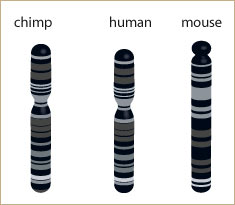http://www.seasky.org/celestial-objects/pulsars.html
Search some of the stuff we have so far...
Friday, April 29, 2016
Pulsars
http://www.seasky.org/celestial-objects/pulsars.html
Dangerous chemicals in human breastmilk?
-http://www.npr.org/2012/05/16/152818798/breasts-bigger-and-more-vulnerable-to-toxins
For more information, go to the site above.
How are homo-sapiens related to primates?
 Several species of primates, such as orangutans, gorillas, chimpanzees, and other extinct species, are considered evolutionary relatives of humans. The truth behind it is all in the DNA. Also, the idea is taken from the similarities in the anatomy of a chimp compared to a human. As you can see in this image, there is 98% genetic similarity. That's only two percent of a genetic change. Coincidence? Many people would argue not. Interesting, right? The primates fall into the hominids family, as do humans, so we're classified as similar creatures. The neural systems of chimps are actually slightly more advanced than most animals, and can sometimes be trained to do work for humans, like carrying things and helping with various tasks. There are also chimpanzees that are trained to speak, in a human way, and be able to communicate with humans. In a way, it's another form of grouping them with humans, and categorizing them in a single classification with us. For more information, go to the site below-
Several species of primates, such as orangutans, gorillas, chimpanzees, and other extinct species, are considered evolutionary relatives of humans. The truth behind it is all in the DNA. Also, the idea is taken from the similarities in the anatomy of a chimp compared to a human. As you can see in this image, there is 98% genetic similarity. That's only two percent of a genetic change. Coincidence? Many people would argue not. Interesting, right? The primates fall into the hominids family, as do humans, so we're classified as similar creatures. The neural systems of chimps are actually slightly more advanced than most animals, and can sometimes be trained to do work for humans, like carrying things and helping with various tasks. There are also chimpanzees that are trained to speak, in a human way, and be able to communicate with humans. In a way, it's another form of grouping them with humans, and categorizing them in a single classification with us. For more information, go to the site below-Japan's X-ray Telescope is Gone
 Last month, the Japanese satellite ceased all communication with earth. Everything was working fine since it was launched until March 17, when it stopped radio signal. They just announced it yesterday, while including that they will accelerate and focus more on finding out what meant wrong. The idea was to scan for X rays in Supernovas and Galaxy clusters. It's sad that it was not a possibility. I think that it might have been hit by something or a similar situation. Although, I am not sure at all. For more information, go to the site pasted below-
Last month, the Japanese satellite ceased all communication with earth. Everything was working fine since it was launched until March 17, when it stopped radio signal. They just announced it yesterday, while including that they will accelerate and focus more on finding out what meant wrong. The idea was to scan for X rays in Supernovas and Galaxy clusters. It's sad that it was not a possibility. I think that it might have been hit by something or a similar situation. Although, I am not sure at all. For more information, go to the site pasted below-Thursday, April 28, 2016
Hyperloops
 |
| (inside of a hyperloop) |
http://www.cbsnews.com/news/elon-musk-to-build-hyperloop-test-track-in-california/
Ice Age Vs. Global Warming
Our world. A comparatively small, perfectly round sphere of gasses with a chunk of dirt expanding from the center. The only planet within human's proven portion of imagination, or factual knowledge, that is proven to have life and agreed upon by all humans that inhabit it. Every few millenniums or so, the world freezes up and is slowly and partially engulfed in a large, solid, sheet of ice and several glaciers. Then it changes back to a comfortable state, known as an interglacial. The icy periods have a long scientific term as well but are commonly known as ice ages among laymen.
The world is heating up. Gasoline cars, industrial factories, and coal burning are pouring carbon dioxide into our little air tank. The heat is actually pushing the ice age back, causing it not to happen. It might happen very soon, because it has been quite a while since the last ice age.
If we don't stop, there could be a massive greenhouse effect. If we do stop, there could be an ice age. So the human race compels us to ask the question: What do we do?
I, personally, think there needs to be a balance, just like their needs to be a balance in most things. Your diet, your bank account, and now this.
For more info, go to-
Direct link between brain and immune system?
Apparently, the researchers at the University of Virginia found a direct link from the brain and the immune system in June of 2015. Thousands of medical students had been taught otherwise. It's said that many brain diseases, such as autism and Alzheimer's, will be looked at with a significant difference. The treatment and study of such diseases will be more advanced. It just goes to show that in the world of technology and understanding, including health science, the world is always changing. It never slows down. "The discovery was made possible by the work of Antoine Louveau, a postdoctoral fellow in Kipnis’ lab. The vessels were detected after Louveau developed a method to mount a mouse’s meninges – the membranes covering the brain – on a single slide so that they could be examined as a whole."
for more, go to the site above, which tells about the study and how it was done in more detail, and from a firsthand account.
Labels:
Fact,
Medical,
Philosophy
Subscribe to:
Posts (Atom)

